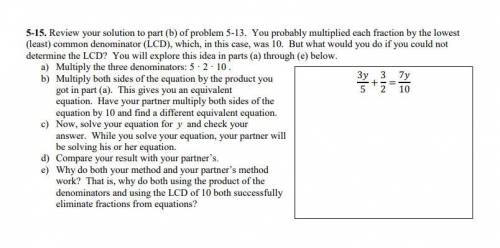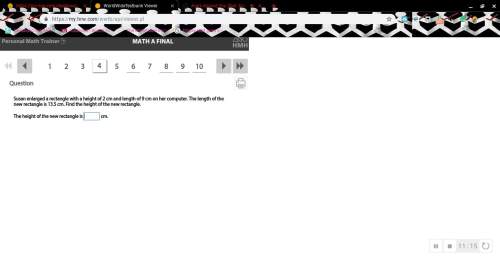
Mathematics, 15.02.2020 18:14 gigi6653
Review your solution to part (b) of problem 5-13. You probably multiplied each fraction by the lowest (least) common denominator (LCD), which, in this case, is . But what would you do if you could not determine the LCD? You will explore this idea in parts (a) through (e) below. Multiply the three denominators: . Multiply both sides of the equation by the product you got in part (a). This gives you an equivalent equation. Have your partner multiply both sides of the equation by 10 and find a different equivalent equation. Now, solve your equation for and check your answer. While you solve your equation, your partner will be solving his or her equation. Compare your result with your partner's. Why do both your method and your partner's method work? That is, why do both using the product of the denominators and using the LCD of both successfully eliminate fractions from equations?

Answers: 3


Other questions on the subject: Mathematics



You know the right answer?
Review your solution to part (b) of problem 5-13. You probably multiplied each fraction by the lowes...
Questions in other subjects:







Geography, 11.02.2020 20:48



Mathematics, 11.02.2020 20:48











